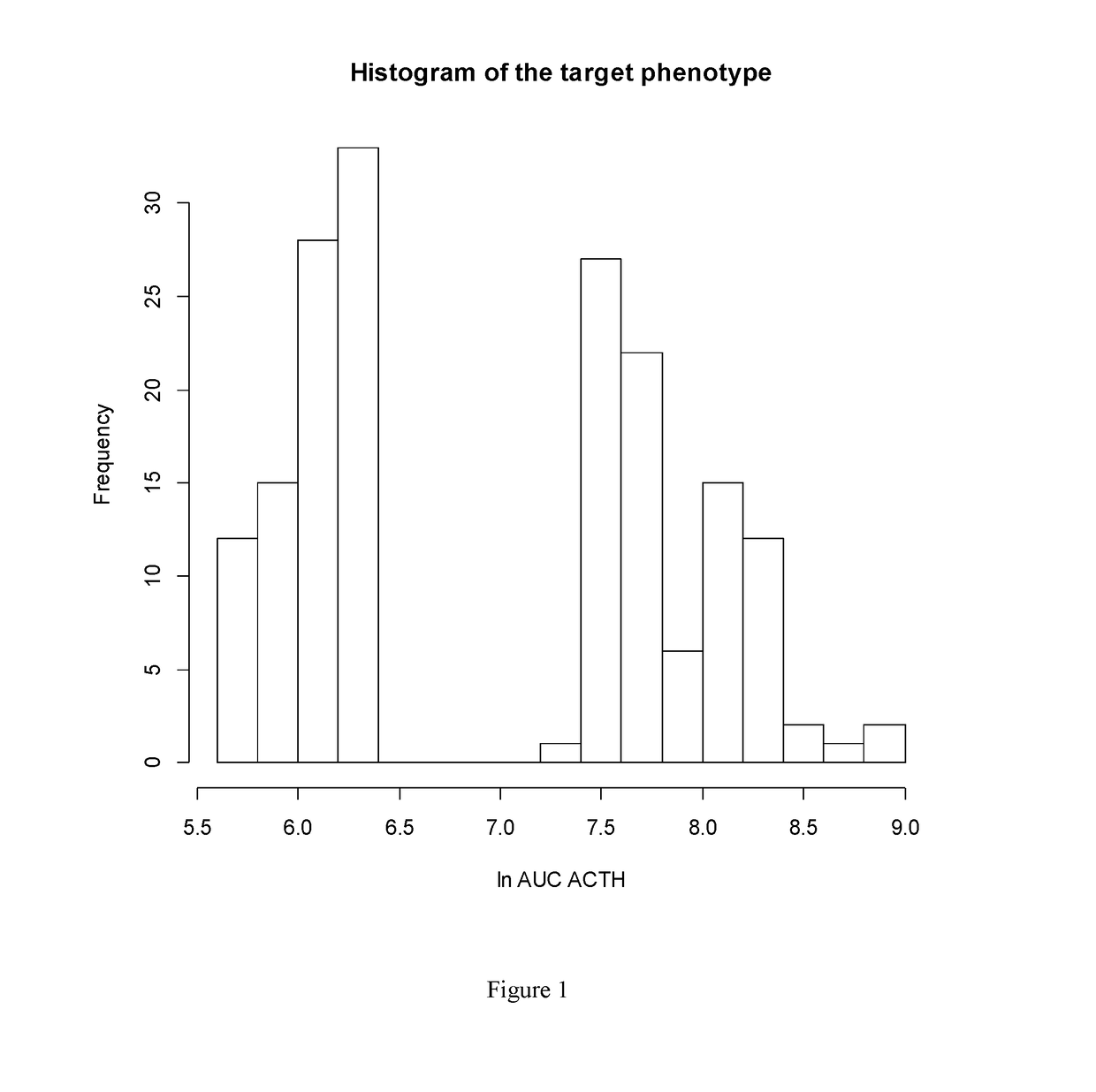Method for predicting a treatment response to a CRHR1 antagonist and/or a V1B antagonist in a patient with depressive and/or anxiety symptoms
a treatment response and crhr1 technology, applied in the field of method for predicting the treatment response of crhr1 antagonist and/or v1b antagonist in a patient with depressive and/or anxiety symptoms, can solve the problems of little success, antidepressant strategies derived, and randomized clinical trials that have failed to demonstrate the superiority of these drugs to placebo
- Summary
- Abstract
- Description
- Claims
- Application Information
AI Technical Summary
Benefits of technology
Problems solved by technology
Method used
Image
Examples
example 1
[0439]Genetic polymorphisms that influence the extent of the ACTH response in the combined Dex / CRH test in patients with current moderate to severe depression were identified using genome-wide SNP analysis of epistasis with genetic variation in the AVPR1B gene, a key player in the pathways relating to the combined dex / CRH test. These polymorphisms describe genetic variations that in interaction with genetic variation in the AVPR1B gene lead to major depression with CRH hyperdrive. Patients carrying the alleles / genotypes associated with a larger cortisol or ACTH response in the dex / CRH test should therefore profit from CRHR1 antagonist and / or V1B receptor antagonist treatment of depression and anxiety.
[0440]Patients:
[0441]Patients with unipolar or bipolar depression admitted as inpatients to the Max Planck Institute of Psychiatry (MPI), Munich, Germany, for treatment of a depressive episode were included in the study. Patients were diagnosed by psychiatrists according to the Diagnost...
example 2
[0475]Sleep disturbances, such as decreased slow-wave sleep, increased sleep fragmentation and rapid-eye-movement sleep (REMS) disinhibition, are cardinal symptoms of major depression in humans. This study aims to identify those patients where a central CRH hyperdrive plays a causal role and which would therefore respond favourably to a CRHR1 antagonist. To test the relationship between a central CRH-overexpression and REM-disinhibition in particular, transgenic mouse models where CRH is overexpressed as a result of genetic engineering were employed.
[0476]Many animal models of depression share increases in REM-sleeps (REMS) as a common feature. Therefore, increased REMS in animals should reflect REMS-disinhibitions in humans. Mice with CNS-specific CRH-overexpression strikingly share the characteristic increases in REMS. As such, an increase in REMS indicates a central hypersecretion of CRH and may serve as a biomarker to identify those patients who would benefit from treatment with...
PUM
| Property | Measurement | Unit |
|---|---|---|
| concentration | aaaaa | aaaaa |
| concentration | aaaaa | aaaaa |
| time | aaaaa | aaaaa |
Abstract
Description
Claims
Application Information
 Login to View More
Login to View More - R&D
- Intellectual Property
- Life Sciences
- Materials
- Tech Scout
- Unparalleled Data Quality
- Higher Quality Content
- 60% Fewer Hallucinations
Browse by: Latest US Patents, China's latest patents, Technical Efficacy Thesaurus, Application Domain, Technology Topic, Popular Technical Reports.
© 2025 PatSnap. All rights reserved.Legal|Privacy policy|Modern Slavery Act Transparency Statement|Sitemap|About US| Contact US: help@patsnap.com



